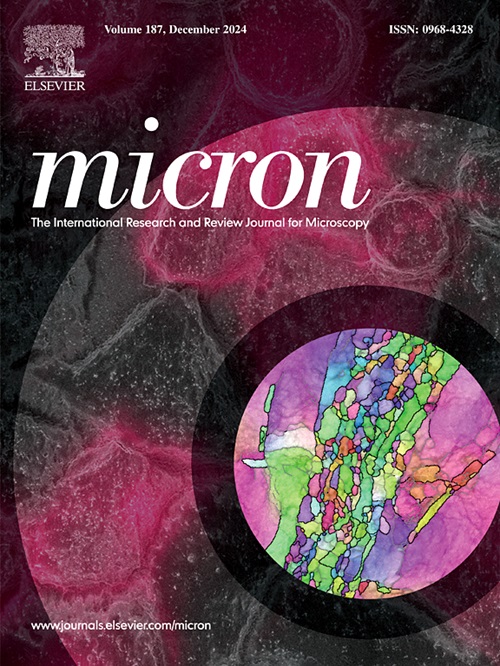薄膜厚度对非掺杂氧化铪外延膜相结构的影响。
IF 2.2
3区 工程技术
Q1 MICROSCOPY
引用次数: 0
摘要
HfO2作为一种性能优异的介电材料在电子工业中得到了广泛的应用。自2011年首次报道HfO2具有铁电性以来,它引起了广泛关注。随着研究的不断推进,氧空位控制和界面控制等各种方法已被证明能够稳定掺杂氧化铪薄膜的亚稳极性o相结构。然而,在非掺杂氧化铪薄膜材料的相关问题上还存在一些不足。本文采用脉冲激光沉积(PLD)技术在SrTiO3衬底上生长了多晶非掺杂HfO2薄膜。原子力显微镜研究表明,随着膜厚的增加,HfO2薄膜的表面粗糙度增大。x射线光电子能谱分析表明,HfO2薄膜纯度高,且仅含Hf4+离子。用电子能谱和紫外可见光谱测量了HfO2的带隙。利用像差校正透射电镜和能量色散x射线能谱研究了HfO2/SrTiO3异质界面的原子结构。HfO2/SrTiO3异质界面是原子突变和非相干的。我们的研究结果表明,通过PLD技术可以获得o相结构的非掺杂HfO2薄膜。本文章由计算机程序翻译,如有差异,请以英文原文为准。
Effect of film thickness on phase structure of epitaxial non-doped hafnium oxide films
HfO2 has been widely used in the electronics industry as a dielectric material with excellent properties. It has attracted much attention since HfO2 was first reported to be ferroelectric in 2011. With the continuous advancement of research, various methods such as oxygen vacancy control and interface control have been proven to be able to stabilize the metastable polar o-phase structure in doped hafnium oxide thin films. However, there are still some shortcomings in the relevant issues concerning non-doped hafnium oxide thin film materials. Here, polycrystalline non-doped HfO2 thin films were grown on SrTiO3 substrates by pulsed laser deposition (PLD). Atomic force microscopy investigation suggests that the surface roughness of HfO2 thin films increases as the film thickness increases. X-ray photoelectron spectroscopy analyses indicate that the HfO2 thin film has a high purity and contain only Hf4+ ions. The band gap of HfO2 was measured by valence EELS and UV–visible spectra. Atomic structures of the HfO2/SrTiO3 heterointerface have been studied by the aberration-corrected transmission electron microscopy and energy-dispersive X-ray spectroscopy. The HfO2/SrTiO3 heterointerface is atomically abrupt and incoherent. Our findings suggest that non-doped HfO2 films with o-phase structure through PLD technology.
求助全文
通过发布文献求助,成功后即可免费获取论文全文。
去求助
来源期刊

Micron
工程技术-显微镜技术
CiteScore
4.30
自引率
4.20%
发文量
100
审稿时长
31 days
期刊介绍:
Micron is an interdisciplinary forum for all work that involves new applications of microscopy or where advanced microscopy plays a central role. The journal will publish on the design, methods, application, practice or theory of microscopy and microanalysis, including reports on optical, electron-beam, X-ray microtomography, and scanning-probe systems. It also aims at the regular publication of review papers, short communications, as well as thematic issues on contemporary developments in microscopy and microanalysis. The journal embraces original research in which microscopy has contributed significantly to knowledge in biology, life science, nanoscience and nanotechnology, materials science and engineering.
 求助内容:
求助内容: 应助结果提醒方式:
应助结果提醒方式:


